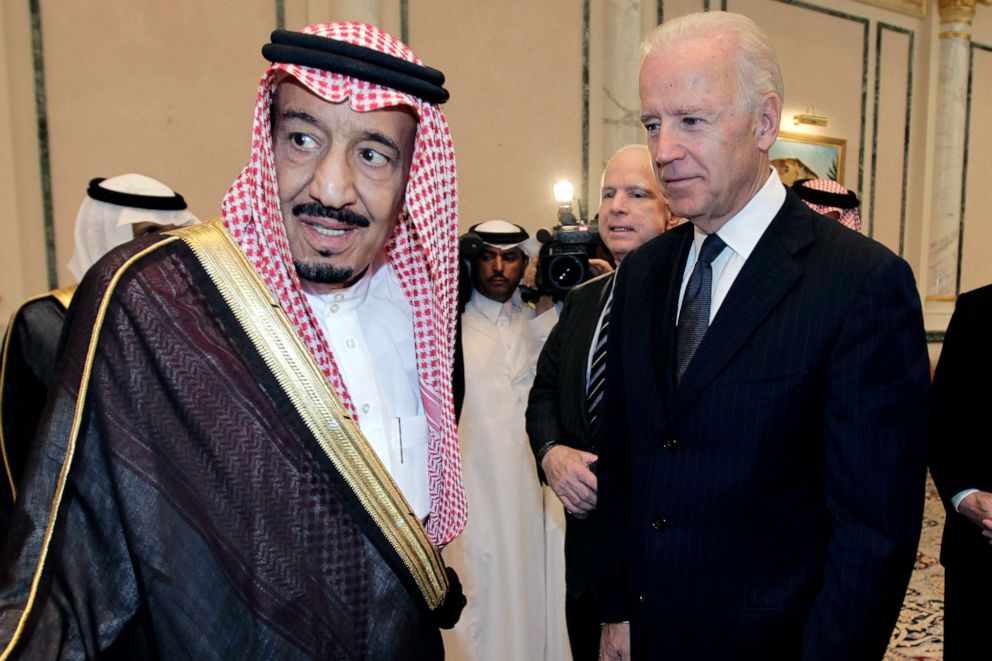
The vote wasn’t even close.
On December 7, the US Senate voted 30-67 against a joint resolution (S.J. Res. 31) which would have blocked a $650 million US arms sale to Saudi Arabia. Only two Republicans voted in favor of the resolution: Senator Rand Paul of Kentucky and Senator Mike Lee of Utah who had co-sponsored the resolution together with Senator Bernie Sanders (I-VT). Twenty Senate Democrats voted for the sale to go ahead.
The $650 million arms sale which the Biden Administration announced on November 4 is for 280 advanced medium-range air-to-air missiles (“AMRAAMs”) and 596 missile launchers. Raytheon Technologies is the principal contractor in the deal.
In 2015, Saudi Arabia, leading a coalition of Arab states, launched a military intervention in Yemen to restore Yemeni President Abdrabbuh Mansur Hadi who had been overthrown the year before by the county’s Iran-backed Houthi rebels. Nearly a quarter of a million Yemenis have died in the years since then. Most deaths in the war are attributable to the Saudi-led coalition.
It looked like a Biden Administration would usher in a new policy. During the November 20, 2019 Democratic presidential candidates’ debate, Biden was asked about Jamal Khashoggi. Khashoggi, a dissident Saudi journalist residing in the US was assassinated in the Saudi consulate in Istanbul on October 2, 2018. The CIA determined that Saudi Arabia’s de facto leader Crown Prince Mohammed bin Salman had personally ordered the hit.
Biden was asked whether he would “punish” the “senior Saudi leaders” responsible for Khashoggi’s murder. Biden said yes; he would make the Saudis “pay the price” for Khashoggi’s murder. Plus: Biden “would make it very clear we were not going to, in fact, sell more weapons to [Saudi Arabia].”
This was a dramatic departure from the policy of Biden’s former boss, President Barack Obama. Obama had taken the US into the war on the coalition side in 2015 in an attempt to mollify the Arab states which opposed Obama’s prospective nuclear deal with Iran. Obama provided the coalition with intelligence-sharing, target spotting, spare parts for coalition warplanes, arms sales, and (until November 2018) in-flight refueling of coalition aircraft. President Donald Trump continued US participation in the war, even boasting about all the cool weapons the US was selling Saudi Arabia (“Saudi Arabia is a very wealthy nation, and they’re going to give the United States some of that wealth, hopefully in the form of jobs, in the form of the purchase of the finest military equipment anywhere in the world.”).
For the first few months of 2021, it seemed like Biden would break from the Obama-Trump policy on Yemen. In his first major foreign policy address on February 4, President Biden announced that the US was cutting off support for “offensive operations in the war in Yemen, including relevant arms sales.”
Was the $650 million deal with Saudi Arabia a “relevant arms sale”? One would think so. But, according to the Biden Administration, the AMRAAMs are “defensive.”
They are anything but. The AMRAAMs are offensive weapons. They can shoot down aircraft flying in or out of the capital’s Sana’a International Airport. Sarah Lazare observes that
[U]pon closer examination, the distinction between “offensive” and “defensive” Saudi weapons begins to disappear. So-called defensive weapons are part of a military apparatus that is enforcing a brutal blockade, shutting out aid for Yemen and creating a climate of intimidation and fear. The weapons transfer sends a message to Saudi Arabia, at precisely the moment it is refusing to lift its blockade, that U.S. support is unconditional.
(Sarah Lazare, “Biden Is Wrong. There Is No Such Thing as “Defensive” Saudi Weapons in the War on Yemen,” In These Times, Nov. 22, 2021.)
Capitol lawmakers and civil society groups have sent several letters to Biden beginning in March asking how the Administration distinguishes defensive from offensive weapons and operations. They are still waiting for an answer.
Maybe Richard Walton got it right in his discussion of the Cuban Missile Crisis: “[I]t is always the other side’s weapons that are offensive.”[1]
* * * * *
President Biden came out strongly against S.J. 31. Biden seems to have bet all his chips on the possibility of arranging a ceasefire in Yemen, yet the belligerents are still at an impasse. The Houthis won’t agree to a ceasefire until the Saudi coalition lifts the blockade. The Saudi coalition won’t lift the blockade until the Houthis agree to a ceasefire. And around and around it goes.
Arming the Saudis and Emiratis is not the only way Biden has broken his promise to end US support for “offensive operations” in Yemen. Bruce Riedel of the Brookings Institution says that the US still “provides Saudi Arabia with considerable military support.” This includes transfers of spare parts without which coalition warplanes would be “grounded.”
Instead, as the Quincy Institute’s Annelle Sheline writes: “Saudi air strikes have continued at comparable levels as those observed during the last year of the Trump administration, signaling that U.S. support for offensive operations is unchanged, despite Biden’s statement to the contrary.”
The National Defense Authorization Act
S.J. 31 was not the only defeat for Yemen this week. Another (perhaps temporary) defeat is the National Defense Authorization Act.
Congress is considering the annual defense budget: the National Defense Authorization Act (“NDAA”) for Fiscal Year 2022. This year’s NDAA weighs in at $768 billion. That’s more than President Biden had requested, and a substantial increase from the by no means meagre $740.5 billion NDAA for the year before.
The House version of the NDAA passed on September 23. The bill incorporated an amendment from Representative Ro Khanna that would have forced the US to end its support to the Saudi-led coalition fighting in Yemen, a much more ambitious goal than was represented by S.J. Res. 31.
This good news had to be regarded cautiously. Similar amendments from Khanna to end US assistance to the Saudi coalition also made it into the NDAAs for FY 2020 and FY 2021. Both were stripped in conference. So, it was obvious that Congressman Khanna’s amendment would face an uphill battle again this year.
The slope has now gotten steeper.
On December 7, the House approved a compromise version of the NDAA which omits the Khanna amendment and other progressive measures. The compromise NDAA now heads to the Senate.
A statement was issued by Representative Khanna, Representative Tom Malinowski (D-NJ), and Representative Gerry Connolly (D-VA) after the vote. The statement blames “a small group of senators—for reasons that are not publicly explained or challenged” for excising a host of progressive amendments from the compromise NDAA, “including provisions to rebalance our relationship with Saudi Arabia in the face of the Kingdom’s disastrous war in Yemen and its campaign of reaching into other countries to threaten and kill its critics.” The three lawmakers promised to fight for Congress to debate the deleted amendments.
How many more Yemenis need to die before President Joe Biden and Congress tell Saudi Arabia and the United Arab Emirates to go to Hell? This week’s catastrophic votes signal that the US Congress is perfectly willing to see more Yemenis die.
Notes.
[1] RICHARD J. WALTON, COLD WAR AND COUNTERREVOLUTION: THE FOREIGN POLICY OF JOHN F. KENNEDY (1972), page 141.



